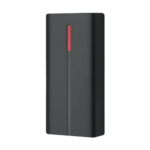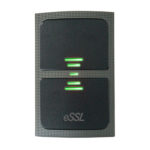RFID Wiegand reader is a device that can read and write data to RFID tags. It uses the Wiegand communication protocol to transmit data to an access control system or other host device. Wiegand readers are widely used in access control, timekeeping, and other applications where contactless identification is needed.
How does an RFID Wiegand Reader Work?
When an RFID tag is presented to an RFID Wiegand reader, the reader generates an electromagnetic field that powers the tag. The tag then transmits its unique identifier (UID) to the reader. The reader then decodes the UID and transmits it to the host device using the Wiegand protocol.
Proximity readers: These readers have a short read range, typically around 10 cm. They are commonly used in access control systems, where users need to swipe their RFID card or tag in order to gain access.
RFID Wiegand readers come with a variety of features, including:
- Wiegand output format: Most RFID Wiegand readers support the Wiegand 26-bit or Wiegand 34-bit output format. This makes them compatible with a wide range of access control systems and other host devices.
- Read range: RFID Wiegand readers are available with a variety of read ranges, from a few centimeters to several meters.
- Weatherproofing: Some RFID Wiegand readers are weatherproof, making them suitable for outdoor use.
- Tamper resistance: Some RFID Wiegand readers are tamper resistant, making them ideal for use in high-security environments.
RFID Wiegand readers offer a number of benefits, including:
- Convenience: RFID Wiegand readers allow users to gain access or identify themselves without having to touch anything. This is especially convenient in areas where hygiene is a concern, such as hospitals and food processing facilities.
- Security: RFID Wiegand readers can be used to implement a secure access control system. RFID tags are difficult to counterfeit and can be programmed to expire, making them ideal for use in high-security environments.


